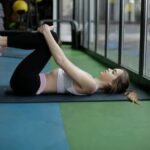Heart rate is a crucial indicator of overall health and plays a significant role in maintaining fitness levels. As individuals age, changes in heart rate become increasingly important to understand and monitor. In this article, we will explore how heart rate changes with age, specifically focusing on the impact of fitness and exercise.
Firstly, it is necessary to define heart rate and its significance in maintaining overall health and fitness levels. Heart rate refers to the number of times your heart beats per minute and acts as an essential metric for cardiovascular health. Understanding the common changes in heart rate as individuals age is vital for recognizing potential risks or improvements that may be needed.
Age has a notable impact on resting heart rate, which is the heart rate when one is at complete rest. We will examine the typical range of resting heart rates in different age groups, discussing the hormonal and physiological factors that influence this measure. Resting heart rate variability will also be explored to understand its relationship with age.
Furthermore, maximum heart rate, which represents one’s highest attainable heart rate during physical exertion, experiences changes as individuals age. The decline in maximum heart rate comes with implications for cardiovascular fitness, exercise capacity, and intensity. We will delve into these effects and discuss how decreased maximum heart rate influences one’s ability to maintain optimal fitness levels.
In summary, understanding how heart rate changes with age requires examining resting and maximum heart rates while considering their implications for overall health and fitness. By prioritizing exercise and fitness routines tailored to specific age groups, individuals can work towards maintaining a healthy heart rate throughout their lives. In the following sections of this article, we will delve deeper into various aspects related to heart rate changes with age, fitness, and exercise.
The Impact of Age on Resting Heart Rate
Resting Heart Rate: Definition and Importance
Resting heart rate refers to the number of times the heart beats per minute when the body is at rest. It is an essential indicator of cardiovascular health and can provide insights into overall fitness levels.
A lower resting heart rate is generally associated with better cardiovascular fitness, while a higher resting heart rate may suggest underlying health issues or poor cardiovascular conditioning. Understanding how age affects resting heart rate can help individuals assess their health status and make informed decisions regarding their exercise and fitness routines.
Age-Related Changes in Resting Heart Rate
Resting heart rate tends to decrease as individuals age, with the lowest rates typically observed in young children and adolescents. The average resting heart rate for adults ranges from 60 to 100 beats per minute (bpm). As individuals enter their senior years, it is not uncommon for their resting heart rates to increase slightly. However, these changes are generally minimal and do not indicate any significant decline in overall cardiovascular health.
Several factors contribute to age-related changes in resting heart rate. Hormonal changes, such as decreased production of thyroid hormones, can affect metabolism and cardiac function, leading to alterations in heart rate regulation. Additionally, physiological changes occur in the cardiovascular system over time.
Blood vessels may become less elastic, causing mild increases in blood pressure that can influence resting heart rate. The autonomic nervous system also plays a role in regulating heart rate by balancing the sympathetic and parasympathetic responses, which may be affected by age-related changes.
Resting Heart Rate Variability and Aging
Resting heart rate variability (HRV) refers to the variation between each heartbeat during rest periods. Higher HRV is generally regarded as a positive indicator of cardiovascular health because it demonstrates better adaptability and resilience of the cardiac system under different conditions. With advancing age, there is typically a decline in HRV, which may be reflective of reduced overall cardiovascular flexibility and compromised cardiac function.
Age-related factors such as reduced autonomic nervous system modulation, increased sympathetic tone, and decreased parasympathetic activity can contribute to decreased HRV. However, it is important to note that HRV varies among individuals within the same age group due to genetic, lifestyle, and environmental factors. Therefore, it is essential to consider individual differences when evaluating HRV and its relation to aging and overall health.
Understanding the impact of age on resting heart rate and HRV can help individuals tailor their fitness routines accordingly. Regular exercise can have a positive effect on both resting heart rate and HRV by improving cardiovascular conditioning, enhancing autonomic nervous system function, and promoting overall heart health. It is crucial for individuals of all ages to incorporate regular physical activity into their lifestyles to maintain optimal resting heart rate levels and promote healthy aging.
Age-related Changes in Maximum Heart Rate
Maximum heart rate (MHR) is a key indicator of cardiovascular fitness and plays a crucial role in determining exercise capacity and intensity. As individuals age, there is a natural decline in maximum heart rate due to various physiological changes that occur in the body. Understanding these age-related changes can help individuals tailor their exercise routines to maintain optimal heart health.
The average maximum heart rate for adults can be estimated by subtracting their age from 220. However, this estimation becomes less accurate as individuals get older. Studies have shown that maximum heart rate decreases by an average of one beat per year after the age of 30. This decline is partly attributed to changes in cardiac function, including decreased elasticity of the heart muscle and reduced responsiveness of the autonomic nervous system.
The decrease in maximum heart rate with age has implications for exercise capacity and intensity. Older individuals may find it more challenging to reach higher heart rate zones during workouts compared to younger individuals. This means that they may need to adjust their exercise routines by incorporating higher-intensity activities or longer durations to achieve similar cardiovascular benefits.
Despite the decline in maximum heart rate, regular physical activity can help mitigate age-related changes and improve overall cardiovascular fitness. Engaging in aerobic exercises such as brisk walking, swimming, or cycling can increase cardiac efficiency and enhance the body’s ability to deliver oxygen-rich blood to working muscles, even with a lower maximum heart rate.
| Age Range | Estimated MHR (220 – Age) |
|---|---|
| 20 years | 200 bpm |
| 40 years | 180 bpm |
| 60 years | 160 bpm |
Exercise and Heart Rate
Maintaining a healthy heart rate is crucial for overall cardiovascular health, regardless of age. However, as individuals age, their heart rate can undergo changes that may impact their fitness levels. Regular exercise plays a vital role in managing and regulating heart rate at different stages of life. This section will elaborate on the connection between exercise, heart rate, and age.
Engaging in regular physical activity has numerous benefits for heart health. Exercise helps to strengthen the heart muscle, improve circulation, and lower blood pressure levels. It also plays a significant role in managing weight and reducing the risk of developing chronic conditions such as cardiovascular disease and diabetes.
Different types of exercise have varying effects on heart rate regulation. Aerobic exercises, such as walking, jogging, swimming, and cycling, are particularly beneficial for maintaining a healthy resting heart rate and improving cardiovascular fitness. Strength training exercises also contribute to overall heart health by increasing muscle mass and enhancing metabolism.
It is important to note that the intensity of exercise should be appropriate for the individual’s age and fitness level. Older adults may need to adjust their exercise routines to accommodate any underlying health conditions or physical limitations they may have. Consulting with a healthcare professional or certified fitness trainer can provide guidance on tailoring an exercise program that suits individual needs.
In summary, exercise has a direct impact on heart rate regulation at every stage of life. Regular physical activity contributes to maintaining a healthy resting heart rate as well as improving cardiovascular fitness. Understanding the age-fitness connection regarding exercise and heart rate allows individuals to make informed decisions about their workout routines while ensuring optimal cardiovascular health.
| Age Group | Optimal Heart Rate Range during Exercise |
|---|---|
| 20-29 years | 120-160 beats per minute (bpm) |
| 30-39 years | 115-155 beats per minute (bpm) |
| 40-49 years | 110-150 beats per minute (bpm) |
Cardiovascular Training and Heart Rate Zones by Age
Cardiovascular training is an essential component of maintaining a healthy heart rate at any age. By understanding and targeting specific heart rate zones during exercise, individuals can optimize their cardiovascular fitness and overall health. The concept of heart rate zones refers to different intensity levels that correspond to specific percentages of maximum heart rate.
For younger individuals, such as those in their 20s and 30s, higher intensity exercises are typically recommended to maximize cardiovascular benefits. This includes activities that elevate the heart rate to around 80-90% of their maximum heart rate. Examples of exercises that target these heart rate zones include running, cycling at a fast pace, and high-intensity interval training (HIIT).
As individuals enter middle age, it becomes increasingly important to balance cardiovascular training with lower intensity exercises that provide both aerobic benefits and recovery for the body. Heart rate zones in this age group may range from around 70-80% of maximum heart rate. Exercises such as brisk walking, swimming, and moderate cycling can be highly effective in this range.
For older adults, focusing on maintaining overall cardiovascular fitness while minimizing impact and joint stress is key. Targeting lower intensity heart rate zones between 60-70% of maximum heart rate is often recommended. This can be achieved through activities like low-impact aerobics, water aerobics, or leisurely biking or hiking.
It’s important to note that these percentages are general guidelines and may vary based on individual fitness levels and health conditions. Consulting with a healthcare professional or certified personal trainer is recommended to design a personalized exercise program that takes into account one’s age, fitness level, and specific goals.
Incorporating cardiovascular training into a well-rounded exercise routine can lead to numerous benefits for individuals of all ages. These benefits include improved endurance, increased energy levels, reduced risk of chronic diseases such as cardiovascular disease and diabetes.
Furthermore experimentation with different types of exercises within each heart rate zone can help maintain motivation and prevent boredom. By continuously challenging the heart rate through a variety of aerobic activities, individuals can optimize their cardiovascular fitness, reduce age-related changes in heart rate, and ensure a lifetime of heart health.
Heart Rate Monitoring Tools and Techniques
Methods to Measure and Monitor Heart Rate during Exercise
There are several methods available to measure and monitor heart rate during exercise. One of the most common and accessible methods is to palpate the radial pulse on the wrist or the carotid pulse in the neck. However, this method can be less accurate and has limitations in certain situations, such as when exercising vigorously or when wrists or necks are not easily accessible due to clothing or equipment.
Another popular method is using chest strap heart rate monitors. These monitors consist of a strap worn around the chest, which detects electrical signals from the heart and transmits them wirelessly to a compatible device, such as a smartwatch or smartphone. Chest strap monitors are generally considered more accurate than wrist-based devices, as they directly detect electrical activity rather than relying on optical sensors.
The Advantages of Wearable Fitness Trackers and Heart Rate Monitors
In recent years, wearable fitness trackers have gained popularity for their ability to monitor various aspects of health and fitness, including heart rate. These devices typically use optical sensors on the back of the device to measure blood flow through the skin and estimate heart rate. While not as accurate as chest strap monitors, wearable fitness trackers offer convenience and ease of use for everyday monitoring.
One advantage of wearable fitness trackers is that they provide continuous heart rate monitoring throughout the day, giving users insights into their resting heart rate and how it changes with activity levels. This data can help individuals understand their overall cardiovascular health and track improvements over time.
Heart Rate Variability (HRV) as a Tool to Assess Overall Health and Fitness Levels with Age
Heart rate variability (HRV) is another tool that can be used to assess overall health and fitness levels with age. HRV refers to the variation in time intervals between consecutive heartbeats. Higher HRV indicates a healthier autonomic nervous system, which plays a crucial role in regulating heart rate and other bodily functions.
Measuring HRV can provide information about an individual’s physiological stress levels, recovery capacity, and overall cardiovascular fitness. There are various methods to measure HRV, including smartphone apps and dedicated devices that analyze the time between heartbeats. By tracking HRV over time, individuals can gain insights into how their body is adapting to exercise and managing stress, allowing them to make more informed decisions about their training and lifestyle choices.
Using heart rate monitoring tools and techniques can be valuable for individuals of all ages who are looking to maintain a healthy heart rate during exercise. These tools provide real-time feedback and allow individuals to track their progress over time, making it easier to adjust their exercise intensity or seek medical advice if necessary.
Health Conditions and Medications
As individuals age, they may be more susceptible to certain health conditions that can potentially impact heart rate. Hypertension (high blood pressure) and diabetes are two common examples of health conditions that can affect heart rate regulation. These conditions can lead to changes in the structure and function of the cardiovascular system, which in turn can influence heart rate.
For individuals with hypertension, their resting heart rate may be higher due to increased resistance against blood flow in the arteries. This higher level of resistance requires the heart to work harder to pump blood throughout the body, resulting in an elevated heart rate. Additionally, medications used to treat hypertension such as beta blockers can also lower resting heart rate by blocking the effects of adrenaline on the heart.
Diabetes is another health condition that can impact heart rate. Individuals with diabetes may experience autonomic neuropathy, which is a dysfunction of the nervous system that controls involuntary bodily functions such as heart rate. This dysfunction can lead to an irregular or erratic heart rate pattern, known as arrhythmias. Moreover, certain medications used to manage diabetes, such as beta blockers or some types of insulin, can also affect heart rate.
It is important for individuals with these health conditions to consult with healthcare professionals before engaging in exercise routines. They will be able to provide guidance on managing medications and monitoring heart rate during physical activity to ensure safety and optimal benefits.
Strategies for Managing Heart Rate Variations
- Consult healthcare professionals: Before starting any exercise program, individuals with hypertension or diabetes should consult with their healthcare provider for personalized advice on managing their conditions while exercising safely.
- Monitor medications: It is essential for individuals taking medications that affect heart rate to monitor their resting and exercising heart rates closely. Any significant changes should be reported to healthcare professionals for appropriate adjustments.
- Gradual progression: When incorporating exercise into daily routine, individuals with health conditions should start with low-intensity activities and gradually increase the duration and intensity over time. This approach allows the body to adapt to the demands of exercise without placing excessive stress on the cardiovascular system.
- Consider alternative exercises: Some forms of exercise may be more suitable for individuals with certain health conditions. For example, swimming or cycling may be better options for individuals with hypertension as they are low-impact activities that put less strain on the heart.
By being mindful of their health conditions, monitoring medications, and following appropriate exercise guidelines, individuals can manage variations in heart rate while still reaping the numerous benefits of regular physical activity. It is always important to prioritize safety and consult healthcare professionals for personalized advice on heart rate management during exercise.
Training and Lifestyle Recommendations for Optimal Heart Rate Control
Maintaining optimal heart rate control is crucial for overall cardiovascular health, regardless of age. Here are some training and lifestyle recommendations that can help individuals of all ages achieve and maintain a healthy heart rate:
- Engage in regular aerobic exercise: Aerobic exercises such as walking, jogging, swimming, or cycling play a key role in regulating heart rate. Aim for at least 150 minutes of moderate-intensity aerobic activity per week or 75 minutes of vigorous-intensity aerobic activity. Regular aerobic exercise improves heart function, increases cardiovascular fitness, and helps to lower resting heart rate.
- Incorporate strength training: Aside from aerobic exercises, it is essential to incorporate strength training into the fitness routine. Strength training exercises like weightlifting or bodyweight exercises help build muscle mass and improve overall cardiovascular health. Increased muscle mass also enhances the efficiency of the heart’s pumping action, leading to better regulation of heart rate.
- Practice stress management techniques: High levels of stress can elevate heart rate and have a negative impact on cardiovascular health. Managing stress through techniques like meditation, deep breathing exercises, yoga, or engaging in hobbies can help keep the heart rate in check.
- Maintain a balanced diet: A healthy diet plays a significant role in maintaining optimal heart rate control. Include plenty of fruits, vegetables, whole grains, lean proteins, and healthy fats in your meals while limiting processed foods high in saturated fats and added sugars.
- Get enough sleep: Adequate sleep is essential for maintaining optimal heart health. Aim for 7-9 hours of quality sleep each night to promote proper rest and recovery for the body.
- Avoid smoking and limit alcohol consumption: Smoking damages blood vessels and increases the risk of various cardiovascular conditions. Similarly drinking excessive alcohol can disrupt normal heart rate rhythms.
Remember to consult with healthcare professionals before starting any new exercise regimen or making significant lifestyle changes. They can provide personalized recommendations based on individual health conditions, fitness levels, and goals. By prioritizing heart health through regular exercise and a healthy lifestyle, individuals can maintain optimal heart rate control, regardless of age.
Conclusion
In conclusion, understanding the relationship between heart rate, age, fitness, and exercise is crucial for maintaining a healthy heart throughout a lifetime. As we age, there are inevitable changes in heart rate that occur due to hormonal and physiological factors. Resting heart rate tends to increase with age, while maximum heart rate decreases. These changes can impact cardiovascular fitness and exercise capacity.
However, the good news is that regular physical activity and exercise can help slow down age-related changes in heart rate and promote overall heart health. Engaging in different types of exercise such as aerobic training, strength training, and flexibility exercises can have significant benefits in regulating heart rate at different stages of life.
Monitoring heart rate during exercise is an essential tool for optimizing workouts and ensuring that individuals are working within their target heart rate zones. Wearable fitness trackers and heart rate monitors provide a convenient way to measure and track heart rate during workouts.
It is important to note that certain health conditions and medications can affect heart rate regulation with age. Individuals dealing with these conditions should work closely with healthcare professionals to manage their heart rate variations while still engaging in exercise and fitness routines.
Frequently Asked Questions
How does increased fitness affect heart rate?
Increased fitness has a significant impact on heart rate. Through regular exercise and physical activity, the body becomes more efficient at pumping oxygen-rich blood to the working muscles. As fitness improves, the heart muscles become stronger, allowing them to pump larger volumes of blood with each beat.
This increased efficiency means that the heart doesn’t have to work as hard during physical activity, resulting in a lower resting heart rate. During exercise, individuals with increased fitness levels experience a slower increase in heart rate compared to those who are less fit.
How does a person’s fitness level affect heart rate after exercise?
A person’s fitness level plays a crucial role in determining their heart rate after exercise. Highly fit individuals generally have a faster recovery time and their heart rates return to normal relatively quickly after intense physical activity.
This is because their well-conditioned cardiovascular system can efficiently distribute oxygenated blood throughout the body, aiding in the removal of waste products produced during exercise. In contrast, individuals with lower fitness levels may have a longer recovery period as their hearts need more time to restore normal functioning and clear metabolic byproducts from their system.
Does heart rate steadily increase during exercise?
No, heart rate does not steadily increase during exercise for everyone. The relationship between exercise intensity and heart rate is complex and can vary depending on an individual’s fitness level and overall health status. In general, as physical activity intensity increases, heart rate typically rises linearly up to a certain point before it plateaus or even decreases despite continued exertion.
This phenomenon is known as the “plateau effect” and occurs because the body reaches its maximum capacity in delivering oxygen to the muscles during very intense activities. However, it’s important to note that individual responses may differ due to factors such as age, baseline fitness level, and underlying medical conditions. Additionally, low-intensity exercises may result in only modest increases in heart rate depending on an individual’s fitness level but can still provide health benefits when performed consistently over time

Passionate about providing useful information to anyone with an interest in the field of Personal Training, I strive to pass on to our readers quality information and to answer any questions about Personal Trainers, the work they do and how to become one.





